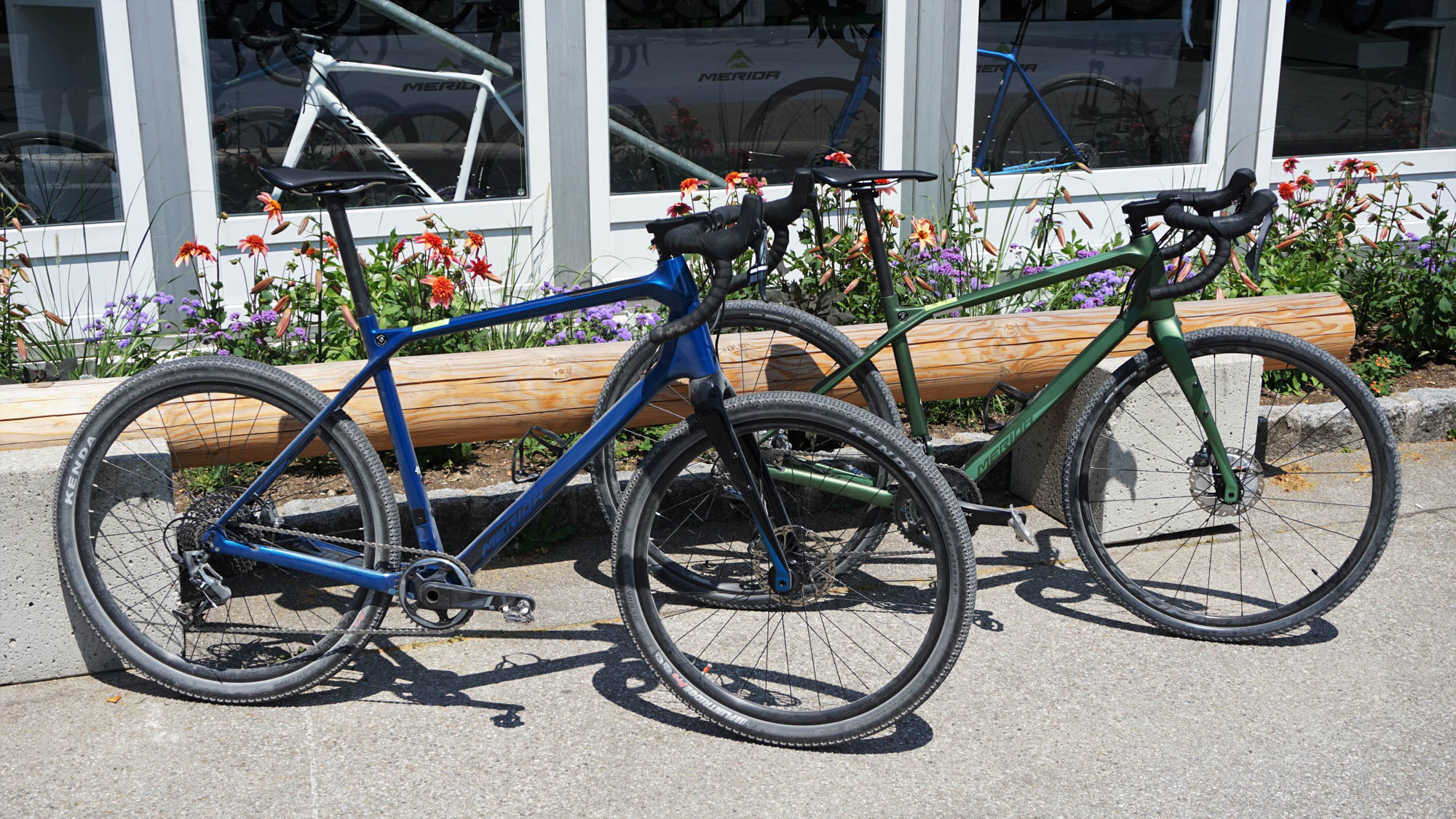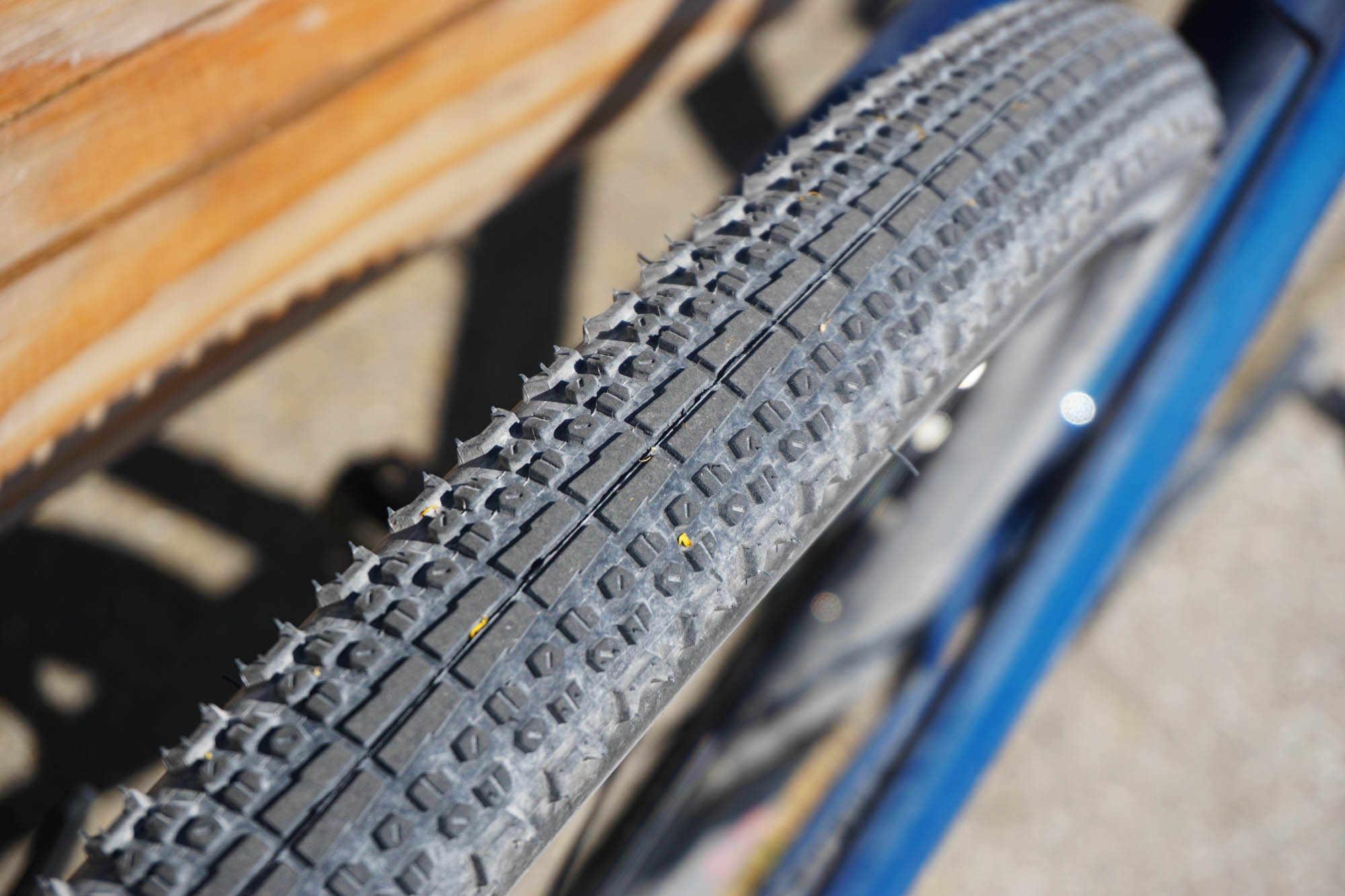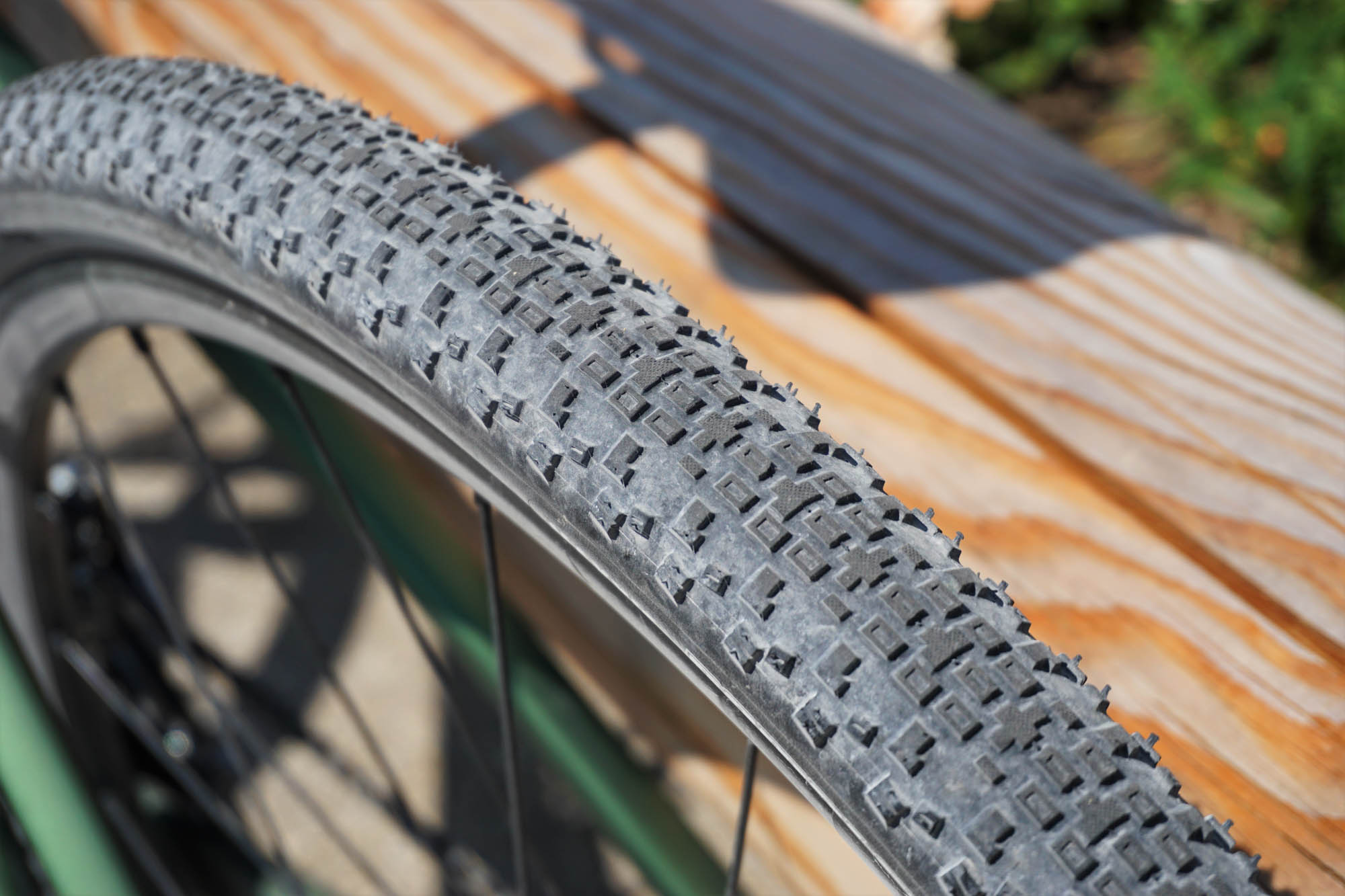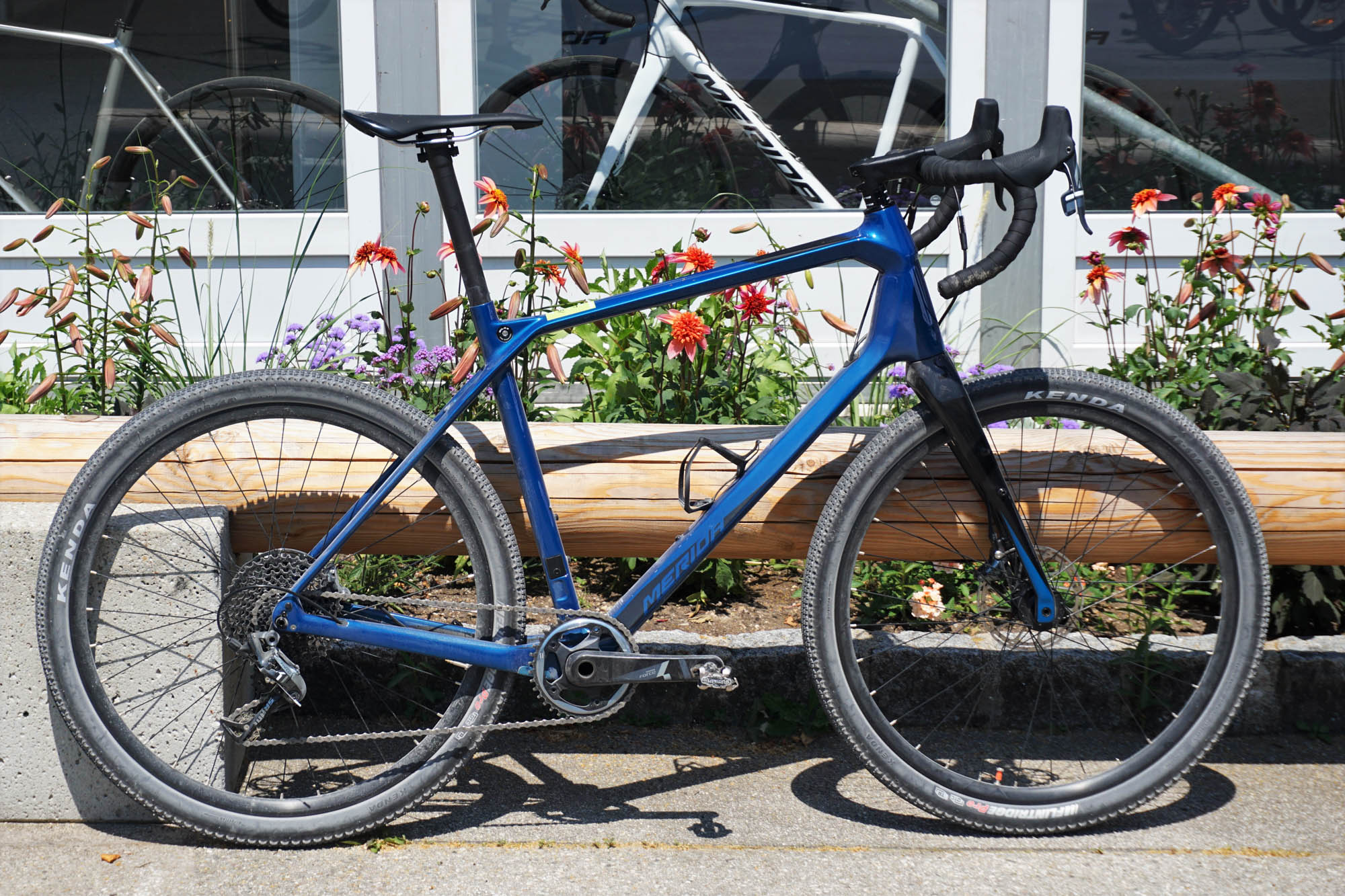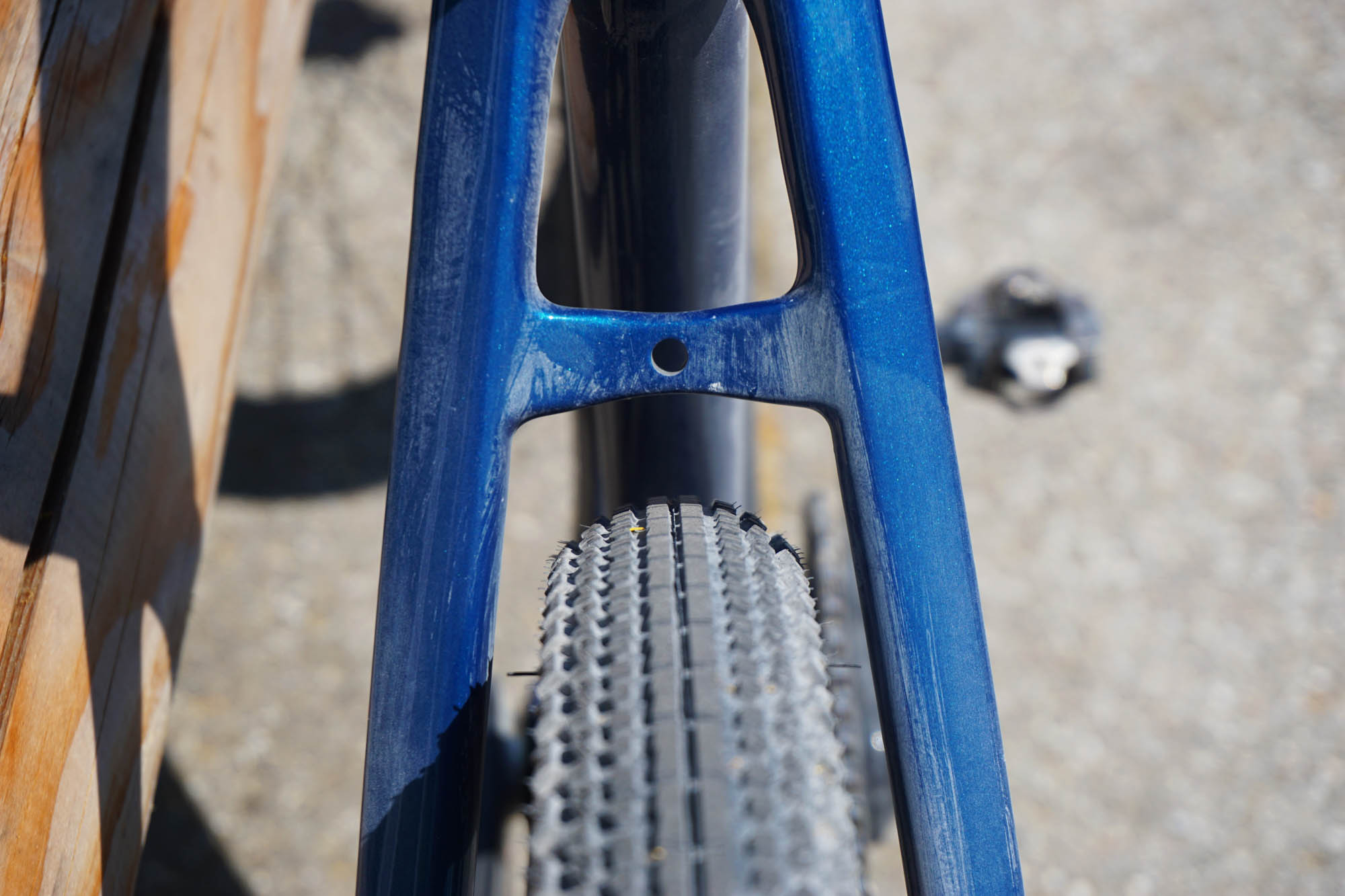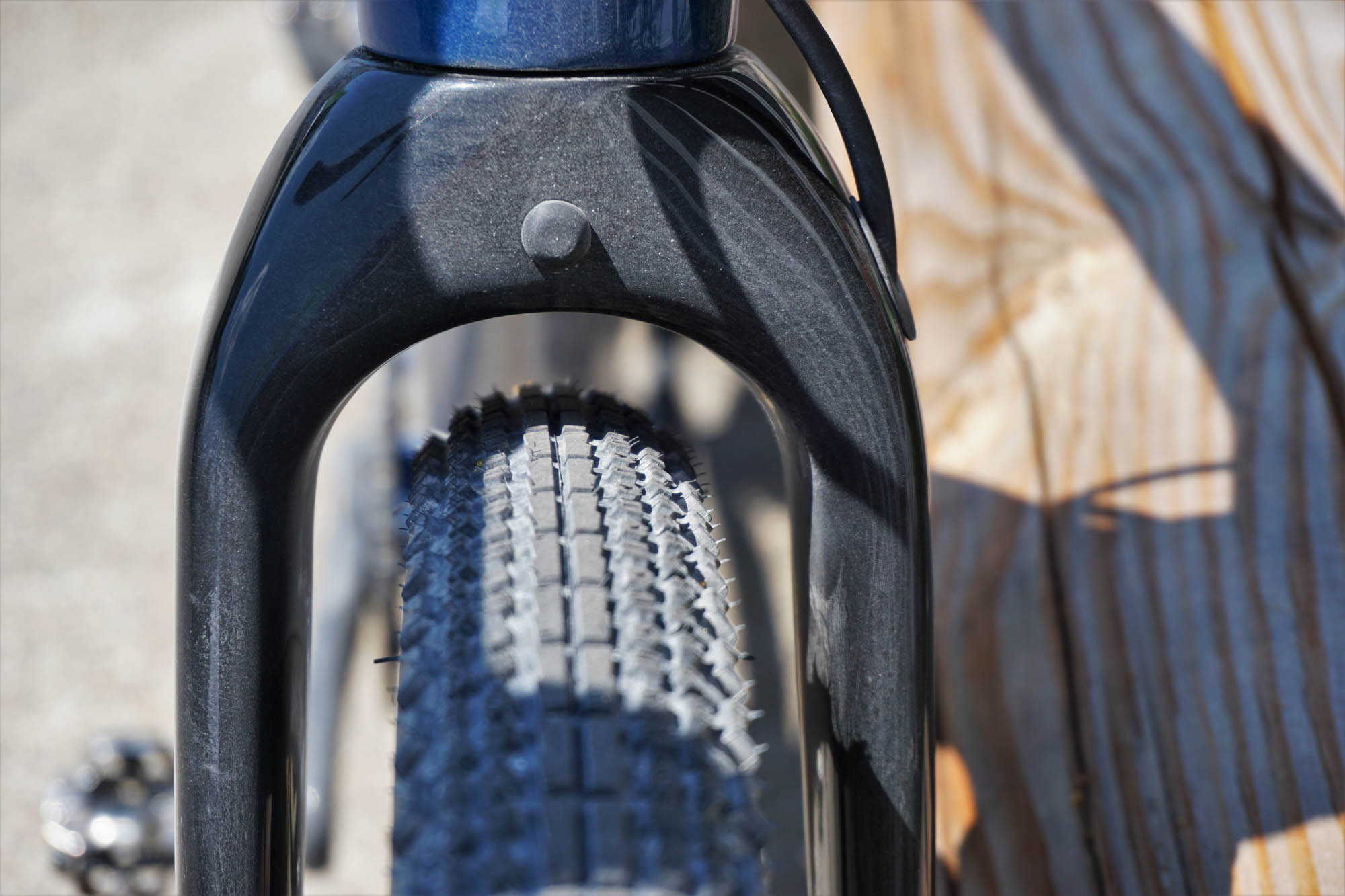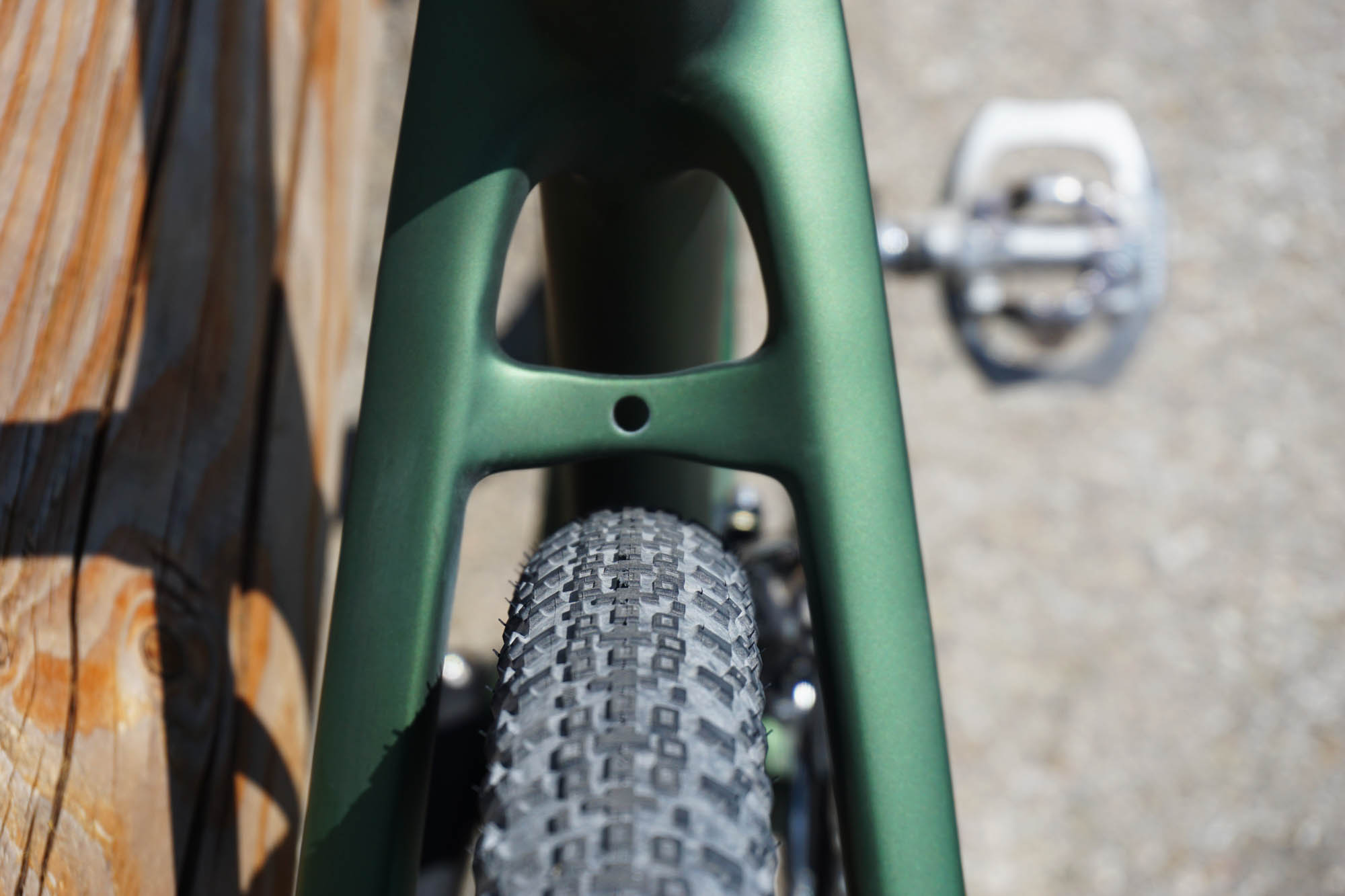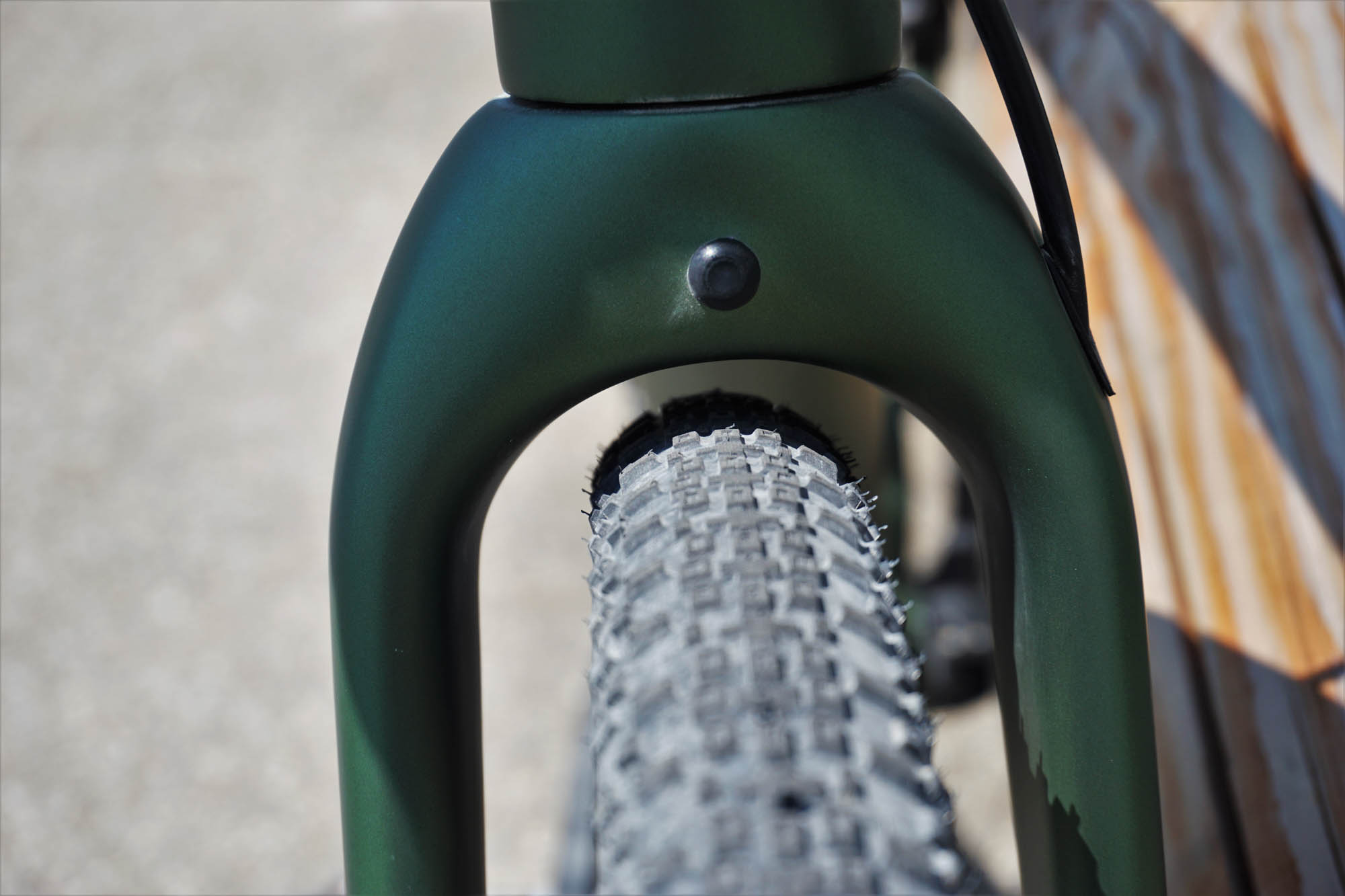The most often asked question when shopping for a gravel bike is whether to go for a single or double chainring setup, likewise if the wider – but smaller diameter – 650b or the tried and trusted 700c tire size is more suitable for riding on gravel roads. In order to answer these common queries we borrowed two Merida Silex carbon gravel bikes, one of which (model 6000+) was equipped with single chainring drive and 650b wheels, while the other one (model 7000) with two-by and 700c. We rode them for a day in typical gravel conditions to find out how they perform, what are the advantages and disadvantages of each of these configurations.
As we have mentioned in the previously published article dealing with the brand new 2020 Merida bike range, the 2019 test camp provided us with the opportunity to try out two top-end Merida Silex gravel bikes with two dissimilar configurations. We took them on a day-long gravel circuit in the scenic landscape in Germany, switching bikes halfway, so both members of the Bikemag staff would have a chance to form opinions in these essential questions.
We were keen to find out the advantages and disadvantages of these competing trends in the gravel scene. Though compatible with both wheel sizes and drive systems, the pair of Merida Silex 7000 models were set up with 700c hoops and Shimano’s brand new GRX gravel-oriented components with a double chainring drivetrain, while the pair of Silex 6000+models at the base camp had 650 wheels along with a complete set SRAM Force 1 “one-by” components.
Although the model numbers are different, the Silex carbon frame for these Merida gravel bikes are identical. The only difference is the component configuration, the wheel size and some of the accessory parts. So there is very little to distract us from answering the two chief gravel dilemmas for 2020. Moreover the two different bike setups actually weighted almost identical on the scales, with a mere half bottle of refreshment separating the Silex 6000+ from the 7000. 99% of riders would not notice a few hundred grams of bike weight –I for one had no clue about the difference until we did the measurements!
What did we expect to learn?
I had a chance to ride a good number of gravel bikes lately: some of them had a single chainring setup while others were shipped as a double. In the same vein some test bikes arriving at the Bikemag office had 650b wheels, other the more conventional 700c size. Let’s start the discussion with the wheel size!
The 700c wheels on gravel bikes have the same rim diameter as those found on 29er mountain bikes and most road bikes. Officially this wheel size is called 622mm, since it’s the diameter of the rim bead where the tire sits. Of course MTBs have wider tires and rims than gravel bikes, while road bike are somewhat narrower, nonetheless the main parameter that determines wheel size is the bead diameter. So a 2,5” wide MTB tire, a 35-40mm gravel tire and a 23mm road tire will all mount onto the same rim – but since the rim width also varies with the type of rig, the fit will not be ideal if tires were swapped between them.
On the other hand, a 650b rim measure 584mm at the bead, and typically the rims widths are designed for tires measuring 42-47mm from side to side. Let’s do the calculations! It’s evident that these two type of wheels will have a 38mm difference in diameter at the rim bead, so the radius is 19mm less for the 650b. As Merida builds the 7000 Silex model with 38-622 tires and the 6000+ with 45-584, these tires will have 7mm difference in size (both laterally and in the vertical direction) in favor of the 6000+, while there is the above-mentioned 19mm increase in rim bead diameter for the 7000. Subtracting the former from the latter gives 12mm of difference in radius at where the tire contacts the ground. Consequently the Silex 6000+ sits 12mm lower than the 7000, so it has a 12mm lower bottom bracket. On the other hand, the tire is 7mm wider with a considerably larger air volume.
So what can we expect from these figures? Physics dictates that the Silex 7000 should have a lower rolling resistance thanks to the larger diameter and narrower tire. So on smooth road surface the 7000 should be faster. On the other hand, the Silex 6000+ should in theory have an advantages when it comes to rough terrain since the larger volume tires are better at soaking up the bumps, and in the meantime this soaking effect lessens rolling resistance in off road conditions. By how much and in what conditions is not something science cannot easily answer…
Moreover the numbers tell us that the lower center of gravity of the Silex 6000+ should aid cornering and overall handling while the larger tire volume generally provides better traction, especially on loose terrain.
Let’s now see what effects the single and double chainring setup have on actual riding! We should first mention that the type of gearing has a lesser effect on the ride feel than the wheel and tire size. If we again carry out the calculations for each of these setups, we find that the 48/31T front chainring paired with the 11-34T cassette at the rear on the Silex 7000 offers a considerable wider gear range than the single 38T chainring driving the 11-42T rear cog set on the 6000+. The low end of the range is actually almost identical, however the Silex 6000+ is completely missing the two top-end gears of the 7000. The difference in the high end may be a hindrance on fast downhills where the rider could easily run out of gears, unable to pedal at the required high cadence. This may actually be the lesser problem as the single chainring setup also has larger jumps between the gears, hence making the choice of gear ratios (positions in the shifting) somewhat challenging. For all these disadvantages the Silex 6000+ has one main benefit: it’s undeniably easier to use in practice, since the rider has front chainrings to deal with.
Ride experience
From the two Merida Silex models I chose the “army green” 7000 model for the first leg of the trip. Right away noticed how much more comfortable the carbon Silex is compared to the aluminum frame version I reviewed while writing the article about the difference between gravel and cyclocross bikes. Mind you the less expensive aluminum Silex compares favorably to most gravel bikes on the market in terms of comfort, so the 7000 felt extra-cushy indeed! On the legendary smooth German gravel roads this bikes rolled like a charm, and the smaller than usual chainrings on the Shimano GRX lent themselves to smooth spinning with high cadence. I believe the new crankset works much better for gravel that the compact road variant found on most gravel bikes. I noticed that I was able to stay much longer in the big chainring, and could do some proper climbing without needing to switch to the small ring. (This is certainly a topic that I’d like to explore in another write-up!)
Once we reached the paved section, I was able to hold a good tempo aboard the Silex, which was partly down to the fast 38mm wide tires. On the downhill section I could certainly make use of the two extra high gears available on the GRX which resulted in a quite decent top speed. I must add that the Silex is above-average in terms of stability – much comparable to modern MTB bikes – which also contributed to the enjoyment of these fast-paced efforts. On the other hand, the solid handling entails a rather wide turning circle, but this is a compromise I’m glad to accept. In this configuration the Silex 7000 is a truly universal bike, which shows it’s mettle on smoother gravel, but can also cope with mild MTB terrain – if that’s what the trail brings. No undue compromises have to be endured aboard this Merida gravel steed!
Hopping aboard the beautiful Merida Silex 6000+ featuring in an enchanting blue finish, I quickly had a taste of how different two otherwise identical gravel bikes could feel on the trails. Since the transfer took place on the asphalt road section, the contrast between the two models were even more glaring. The 650b wheels and the wider tires offer much greater traction at the cost of markedly higher rolling resistance. Indeed one has to put in a much greater pedaling effort to reach the same speed with the Silex 6000+ than the 7000 on hard pavement. Another characteristic which became instantly apparent was the lower center of gravity due to the smaller wheel radius. Yes, 12mm of bottom bracket height is quite apparent on any bike, putting the rider lower, closer to the ground.
The road section also highlighted the main drawback of the single chainring setup, as the jumps between the available gears was noticeably bigger than for the two-by with the same number of cogs at the back. I had trouble finding the proper gear for the given terrain, often having to grind low gears or spinning faster than optimal. (I’m aware of being more sensitive to ideal cadence and pedaling effort than most.) When encountering a steeper descent, I was quickly spinning out while my colleague was still power away in the higher gears available on the Shimano GRX. I tried to compensate by going into an aerodynamic tuck, but due to the higher bars and laid back frame geometry gravel bikes, I found it didn’t lend itself to this type of riding position.
Before I manage to completely discourage the reader from purchasing the Merida Silex 6000+, I should recount how the ride feel changed once we turned off-road. There was a stark transformation for this 650b wheel Silex, the trails are where the 6000+ really feels at home. The rapid succession of small inclines and descents make gear choices less vital, as there is very little continuous momentum in pedaling on such terrain. Moreover, it really helps when the riders doesn’t have to switch between chainrings when encountering rough trails, having to make calculations about gear ratios and avoiding cross-chaining. As we all know, front shifting is not very reliable when riding steep uphills: it’s much too slow and causes more wear and tear for the derailleurs and drivetrain. When it’s a tough job to hold your line, you want to use the shifters as little as possible!
On typical mountain bike terrain the Silex 6000+ beats the 7000 hands down. Apart from the more adequate shifting system, it also offers greater tire volume and noticeably more traction, especially when cornering on lose ground. These tires also offer more comfort, allowing the rider to combat rocky trail sections with confidence. I only wished these 650b wheels had a tubeless setup, and I could have ridden this “beast” just like my mountain bike. Nevertheless, on typical gravel roads and not too challenging trails, the 700c wheels were still marginally faster than the 650b variant, so the latter only tends to provide an advantage when all hell breaks loose.
I wouldn’t like the reader to get the impression that I’m averse to 650b wheels on gravel bikes. It’s just that I feel that the 700c gives me so much more, and I feel that there are less compromises I have to make when riding the larger wheels. They are faster on of the most terrain gravel bikes are designed for, they can be ridden on and off road alike with great pleasure. Of course, there are situations when the 650b is a much better choice, but those instances tend to be on trails best ridden on a hardtail mountain bike. Indeed the Silex 6000+ could be ridden on most MTB marathons with success, and carrying heavy loads on a multi-day bikepacking tour should also be a better experience aboard stronger wheels having paired with greater air volume.
When it comes to choosing between “one and two-by”, I tend side with the classic double chainring setup. If someone rides predominantly on the road, the choice is clear. On the other hand, during trail rides involving a lot of rolling terrain, the single chainring setup makes more sense. Nonetheless swapping the rear cluster is a viable option. If the rider has no steep climbs to deal with, then the jumps between the gears won’t be so big. Concerning the exact setup we have on the Silex 6000+, changing the single chainring to a larger size would alleviate the problem of running out of gear range on the downhills. But in all fairness, all these modifications are unnecessary if the rider chooses the two-by setup, he or she will be able to enjoy a wider ratio with moderate jumps between the gears. Finally there is the question of drivetrain wear, which tends to be higher with “one-by” due to the use of smaller sprockets and cross chaining.
Final word
This write-up is a not only the test of wheels and drive systems, but a review of two bike models employing the same frameset. So which of these two rigs would I choose for my gravel rides? For me the 7000 makes much more sense, as it is closer to what I’d consider a true gravel bike, a rig that can be ridden with enjoyment and satisfaction on many kinds of terrain. While the Silex 6000+ is a fine bike, it caters more for those who tend to ride off-road, and are looking for a gravel bike for their familiar mountain bike trails, including some challenging rooted, rocky tracks.
More information can be found at the Merida (Hungarian and international) website.
https://www.merida-bikes.com/hu-hu
The recommended retail price of the Merida Silex 7000: HUF 899,000. For details and specifications about this model, please click here!
The recommended retail price of the Merida Silex 6000+: HUF 899,000. For details and specifications about this model, please click here!

